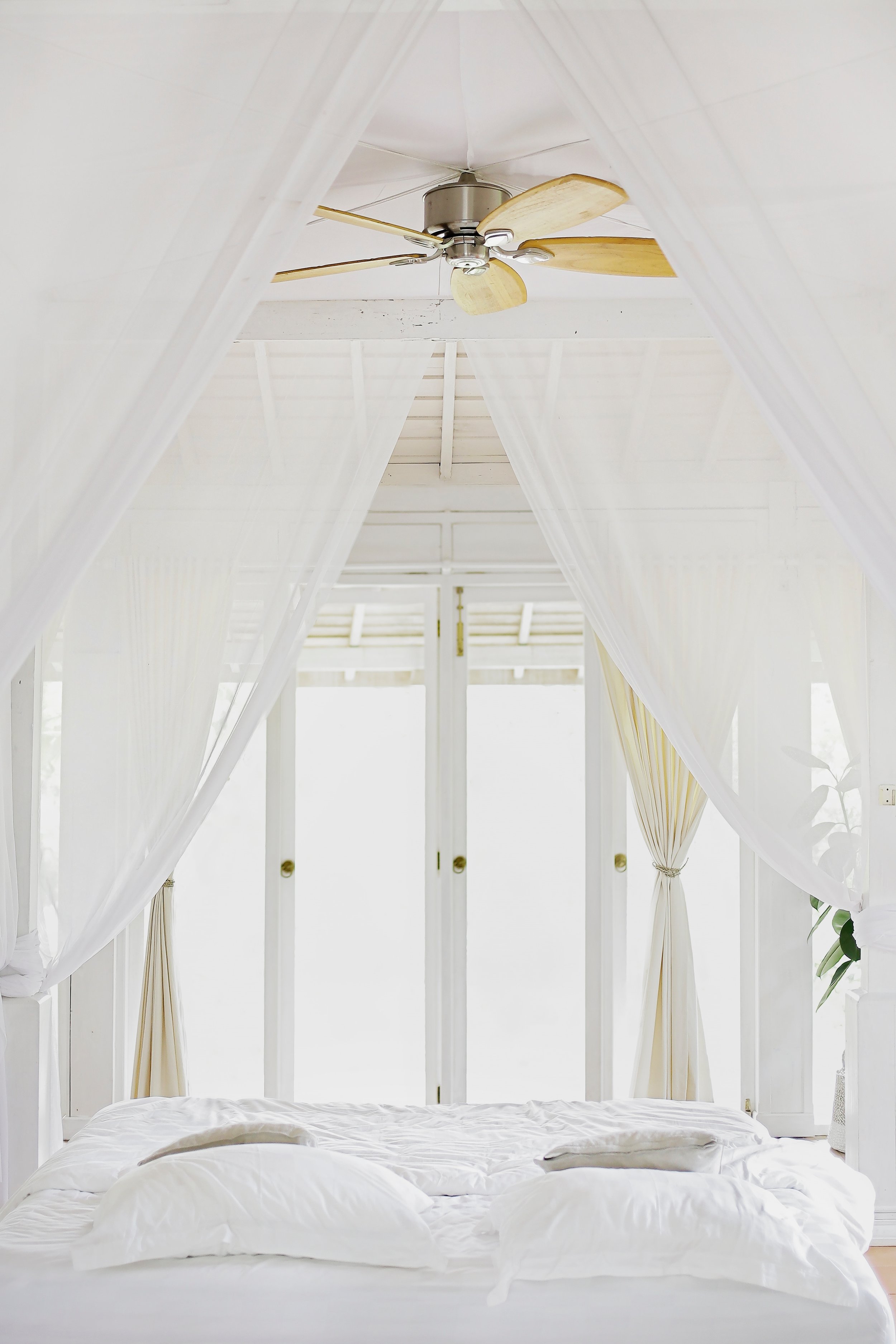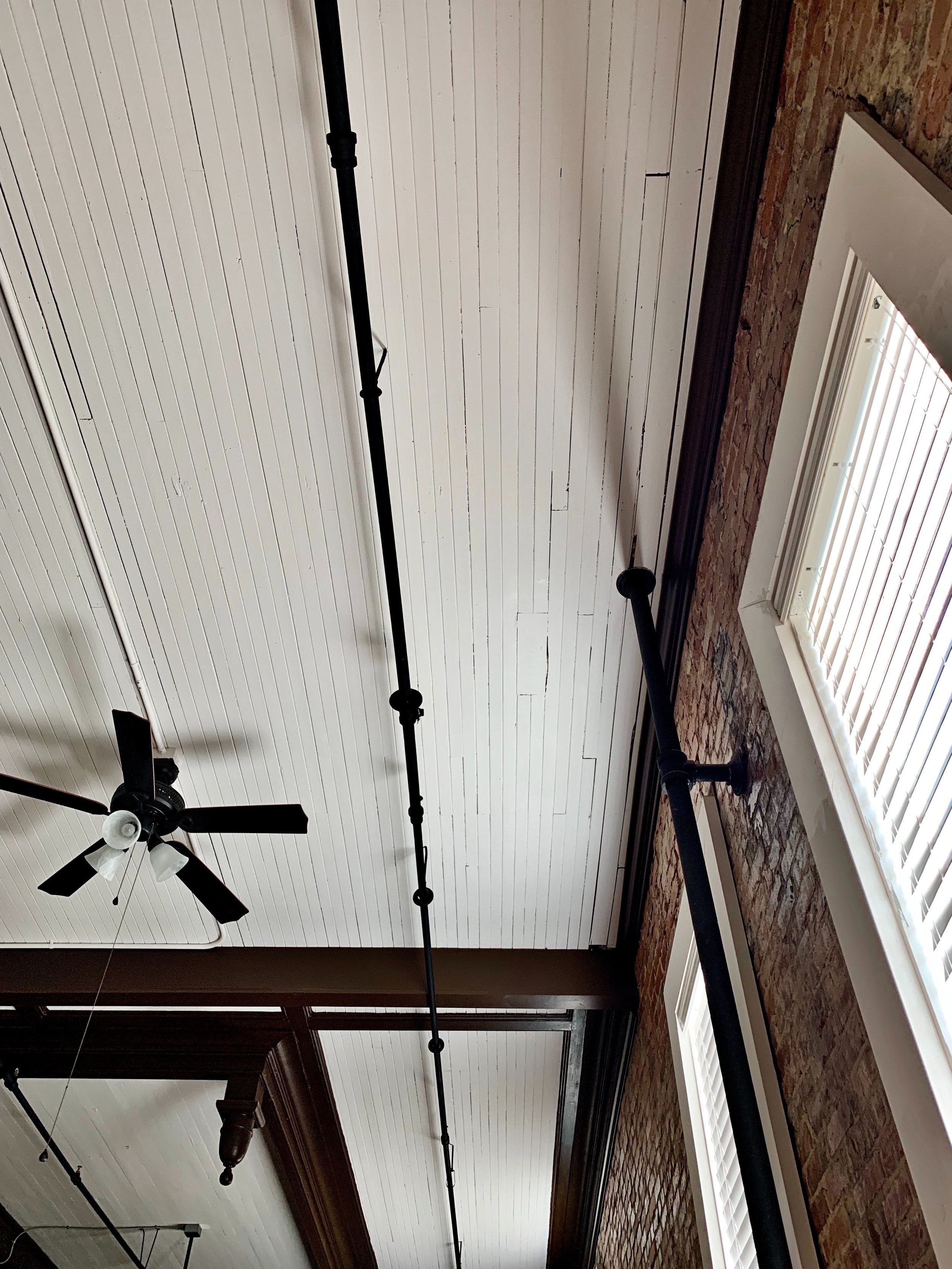Ceiling Fans – A Love-Hate Relationship
If you really think about it, a good ceiling fan is like a good breeze – better felt than seen. A fan is a great way to improve airflow and keep temperatures comfortable. But when choosing the right ceiling fan we tend to think first about appearances rather than the functionality. Unfortunately this strategy can lead to issues upon installation! Much like lighting, you must have the right parameters to make smart decisions – it’s not all about looks - function is paramount.
Here are the basics I look for in functionality – then we can move on to finding the right style.
SIZE and INSTALLATION
Determining the correct width is fairly simple as the size of the fan correlates directly with the size of the room.
There are a few methods for calculating, but here’s a general rule of thumb:
80 SF or less (approx. 8’x10’) – 24”-42” overall diameter
100 to 150 SF (approx. 10’x15’) – 44”-50” overall diameter
150 to 300 SF (approx., 20’x15’) – 52”-60” overall diameter
300SF or more – 60”+ overall diameter OR multiple fans
Height is a little trickier – but my general rule of thumb is that an 8’ ceiling will require a flush mount installation as the fan blades should be at least 84” off the floor. (This is a code recommendation, as well!) If you have a taller ceiling you can use a down-rod installation. Most fans that mount with a down-rod will come with at least a 6” and a 12” rod section (which usually can be connected together to make 18”) but you need to double check the specs. For really tall ceilings you will most likely need to purchase a longer rod section separately.
If you are replacing an existing fan you should be able to use existing wiring. But if you are swapping out a ceiling mount light fixture you’ll need to check the junction box to make sure it is clearly labeled to support a fan. A fan support style junction box offers strength and stability to your fan installation. If you intend to mount it on a sloped ceiling make sure that the fan manufacturer offers a sloped ceiling adaptor.
LIGHTING and CONTROLS:
This is where you really need to think about the functionality of your fan AND whether or not you want to have a separate switch for your light. If you are OK with a pull chain control for turning on the light and changing fan speeds then you are good to go. But, many of my clients either have taller ceilings or don’t like the look of pull chains, so this requires a 3-wire switched fan junction box, which allows you to control the fan and light separately.
To make it even more confusing, many newer fans don’t even have the pull chain option, so in that case you will end up not only needing a 3-wire junction box, but you may need to purchase a special switch AND/OR a specific remote that are sold separately.
Unfortunately many buyers assume that purchasing a fan with an integral light will be enough to light an entire room, this is definitely NOT the case! Even if it is an LED bulb, it will not give you enough light. Check the specs – a 6-8 watts LED is only equivalent to approximately 60 watt incandescent bulb. There are a few fans that offer more light, but they come at a premium and that much light from one central source can be hard on the eyes!
I will always recommend additional lighting (usually recessed fixtures) in order to subsidize the lighting offered with an integral fan light combination.
AIR FLOW
Airflow is measured in CFMs and anything over 6000 CFM is a powerful fan! Unless you are dealing with a really large space you won’t need anything that powerful, but noise should be a real consideration. Typically outdoor fans will have a more powerful motor to offer greater air flow and need to be rated as suitable for damp or wet-locations. Some larger, more powerful fans have a DC-motor and will use less energy overall.
In the summer, run your fan counterclockwise for a cool direct breeze. In the winter, run your fan clockwise to push warm air circulating near the ceiling out and down to better distribute the heat throughout the room.
STYLE
Now that we’ve covered the basics for functionality you can finally look to design. This is where I have some more specific thoughts.
Unless your ceiling fan is a sleek, modern design OR has unique features it’s probably not going to be the focal point of your room’s décor. Generally I suggest to clients that we visually make the fan ”disappear” by selecting a white or brushed nickel finish. Even if you have other finishes in the space don’t feel you need to have everything match – just because your other fixtures are oil rubbed bronze doesn’t mean you need to choose a black fan! Be thoughtful about what you want your eye to focus on in your space.
So why the love/hate relationship with ceiling fans, you ask? I love the functionality of a good fan, but I hate the old-style 3- or 4-prong light kits that have been an industry standard since the stone-age. This awful design directs the light straight at most people’s eye level so I feel the “octopus,” as I refer to it, is one of the worst ways to light a room! Yes, there are other light kit options out there, but well-designed light kits are few and far between. So generally I will recommend clients go with an integral light kit – if any – and install recessed fixtures to create a well-balanced lighting plan. Just make sure they are installed well outside the scope of the ceiling fan blade circumference or you will get a strobe light effect when you turn on the fan and recessed lights at the same time.
As you can see there are so many details that need to be considered before you make your final ceiling fan selection. There is nothing better than a nice cool breeze from a ceiling fan, but if they don’t function the way you had intended – it can drive you crazy! Taking the time to consider all these details will help you make the best decision for your space, décor and lifestyle.




